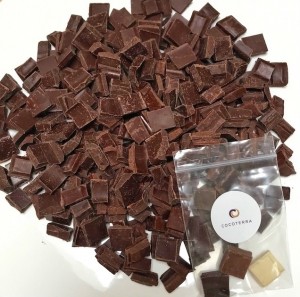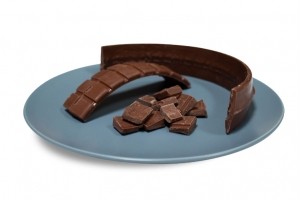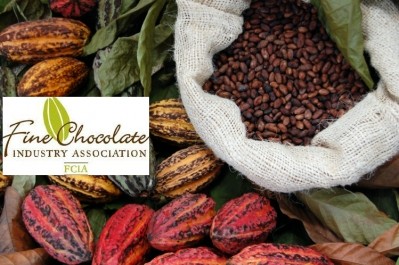CocoTerra wants to make homemade bean-to-bar chocolate as easy as pie
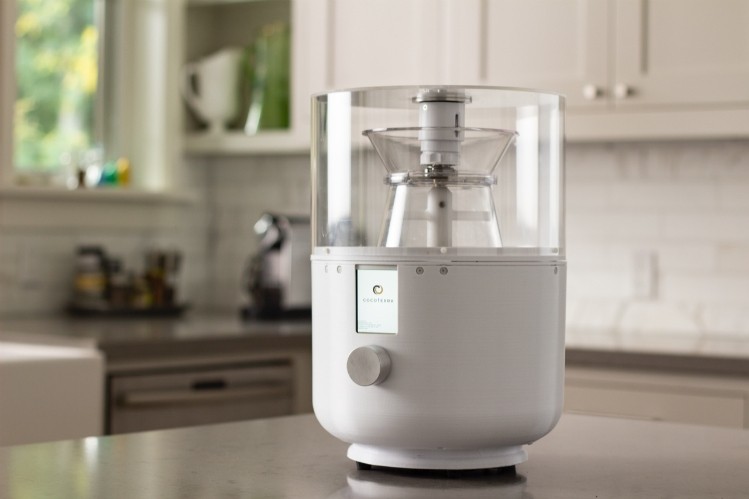
Billed as the first of its kind, CocoTerra believes it can deliver to the chocolate industry what the KitchenAid has to bakers, the Chemex to coffee, or the Brooklyn Beer Kit to homebrewers. Curious consumers can make their own bread, pasta, ice cream and beer at home; why not chocolate?
Existing chocolate production equipment remains expensive and rather unwieldy, CocoTerra founder Nate Saal told ConfectioneryNews, a biochemist by training who has worked in software and hardware development in Silicon Valley for 25 years. He told us he always had a keen interest in food, spending his weekends farming and creating products easily purchased at the store: olive oil, balsamic vinegar, honey.
With a brother engrossed in the fine coffee world on the eastern US coast, Saal began exploring that field, which has morphed from a morning pick-me-up to a dedicated craft where consumers seek out flavorful roasts and alternative coffee machines for home use.
“People get to make it,” he said of coffee’s artisanal ascent. “You start learning about the hardware and the process and the appreciation increases.”
Coffee led to chocolate – tastings, classes at Dandelion in San Francisco, a bootcamp at Hawaii’s Madre – and Saal was off to the races.
Chocolate, however, is a “long, complicated, crazy mix of physics and chemistry and art,” he said, and therein lies a “pretty steep curve in terms of coming out with something that would be edible at the other end.”
He harnessed his tech experience and start-up mentality to embark on the complex task of simplifying, without dumbing down, the chocolate making process from start to finish. The result, CocoTerra, snaps the learning curve and replicates familiar approaches to making other food from scratch:
“We’re modeling these existing experiences – a KitchenAid or coffee maker – [taking] those experience that people are used to and [looping] chocolate into that realm, so it’s as easy as a bread machine.”
Trial and error – and modern design
Saal and the CocoTerra team have developed several iterations of the machine over the past year or so, pulling back the curtain on its progress this summer. Given the complexity of making chocolate from bean (or in this case, nib) to bar, the process of creating a ‘manually controlled but mechanically functional’ machine involved plenty of trial and error.
“Can we give it a brain? Can we teach it about this thing called a chocolate recipe? Can we get it on the countertop, and give it a brain, and automate the process?” Saal asked, emphasizing chocolate’s sensitivity and the ‘cascading effect’ of one minor change in design or size or position of a particular element.
“You finally cobble together what are typically these disparate steps,” explained Saal. “Slowly but surely we built…a functional prototype.”
The current version measures 10 inches in diameter and 15 inches in height.
In about two hours (or more, depending on the recipe and parameters set by the user), the CocoTerra creates a ring of real edible chocolate – either white, milk or dark a possibility. To make the latter two, the machine grinds cocoa nibs for about 30 minutes, at which point the user would add sugar, cocoa butter, milk powder or other recipe-relevant flavorings.
One of the notable differences between traditional chocolate making methods and CocoTerra is its vertical, spinning molder, which simultaneously cools the chocolate. “Chocolate is really difficult to move – it’s viscous,” said Saal. “We didn’t want to rely on a pump or on gravity.” Thus the resulting bar is not a bar at all but rather a centrifugally molded chocolate ring: a ‘clever means to an end’ that turns out to be a unique and, the company hopes, appealing way to present chocolate.
Oliver Nieburg, an analyst at Lumina Intelligence and a former editor of this site, sees the ring as a potential barrier to consumer embrace, but he praised the ‘niche appeal’ to chocolate enthusiasts as well as the on-trend aspect of personalization.
CocoTerra worked with San Francisco-based design firm Ammunition – the brains behind modern icons like the Square cash register, Beats by Dre headphones, Polaroid’s Bluetooth-connected instant camera, and Adobe’s program interfaces. These designers have also dabbled in home kitchen appliances, working with Williams-Sonoma on its branded cookware, June on a smart countertop oven, Ember on a temperature-controlled coffee mug, and Café X on an AI-powered coffee maker.
The result: a sleek, cylindrical appliance – part white, part clear – with a single silver knob and a small interactive screen. It looks like a food processor – but better.
Partners in the industry
In addition to the actual machine, CocoTerra has built a companion app, where users can find recipes and instructions. Importantly, the app will also act as the main monitoring interface for the machine. “We want to hand-hold them through this process, educate, learn more and know more…osmosis by doing,” said Saal. “We want to transform people’s knowledge and experience.”
The app will double as a community for chocolate lovers, where they can explore and share recipes and dive deep into cacao through reference articles about techniques to farmers’ stories.
Users can also browse and purchase essential ingredients there, both from CocoTerra’s private line and eventually partner suppliers from names both ‘well-known and new or unique.’ Though the company would not divulge specifics, (its investors have ‘some knowledge’ of the chocolate or food and beverage space), the team has been in R&D mode this summer, testing nibs from ‘many suppliers around the world.’
Saal told us that increasing engagement with these industry partners has assuaged any fear of cannibalizing the existing chocolate market – both commodity and premium.
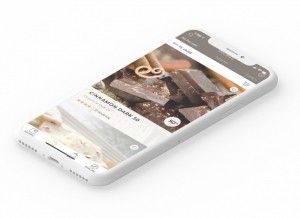
CocoTerra told the Fine Chocolate Industry Association (FCIA), of which it is a member, that its collaborative forum provides avenues to “meet experts in the field of chocolate who can validate (and provide feedback about) what we are doing, including the quality of our chocolate; partner with us in making it easy for consumers to buy ingredients and accessories; and work with us to raise the awareness of and delight from fine-flavored cacao and fine chocolate overall.”
In fact, CocoTerra made a point of not locking consumers into a specific branded product tied to its specific machine – unlike a Keurig or Nespresso, for instance. The supply chains already exist, explained COO Karen Alter, a veteran of startups and tech companies such as Intel. CocoTerra solves the pesky ‘last-mile’ problem.
The company would share neither a formal launch date nor an SRP, but Saal insisted it would parallel other sophisticated home kitchen appliances. Nieburg said the price would diminish traction “unless a top-six chocolate player acquires or licenses the technology.”
Saal doesn’t see price as an issue for the target demographic. “Look at the history of home appliances – [price] comes down to a curve as volume and distribution goes up. We’ll fit those models,” he confirmed to ConfectioneryNews:
“We see this as a mass-market appliance, not just a super expensive specialty appliance.”
Though relatively easy to clean – the setup is similar to cleaning the lined, frozen bowl of an ice cream maker – Saal hopes to make the chamber and mold dishwasher safe.
Ultimately, CocoTerra wants to be more than a machine and a mobile app. It will sell ingredients of its own and those of its to-be-determined partners, as well as different molds, decorations, transfer sheets, and eventually gift boxes, wraps, cups and foils.
Or, as Saal put it: “We want to make it really easy for someone to gift this chocolate.”
